Greece is home to many astounding natural monuments, man-made wonders, and mysteries. Today, we will tell you about one of its most astonishing architectural masterpieces, which took generations to create: the unique monasteries of Meteora in Greece. To reach them, you will have to undertake a challenging and exhausting journey, as they are located at dizzying heights right on rocky outcrops. But believe me, it’s worth it!
How They Came to Be
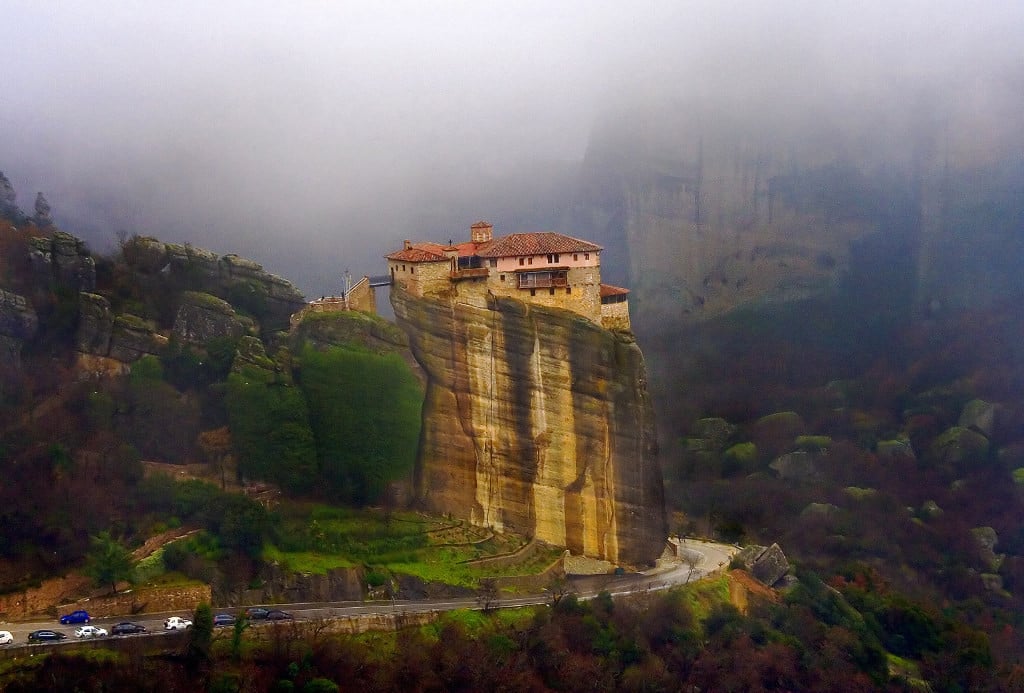
At first glance at the monumental complex, absurd thoughts come to mind. Maybe the gods themselves descended from ancient Olympus and created this masterpiece? How else could such an incredible structure be built among the inaccessible rocks at such a great height? It is simply astonishing.
According to local legend, the inaccessible mountains of Thessaly were favored by monks long before the fifth century. It was here that they spent their time in prayer and led a hermitic lifestyle. On the high-altitude platforms, the faithful spent long hours in prayer, trying to renounce their dark past and understand the true value of life. However, each monk had his own thoughts here, and they hid in small caves from bad weather and for the night, many of which still exist today.
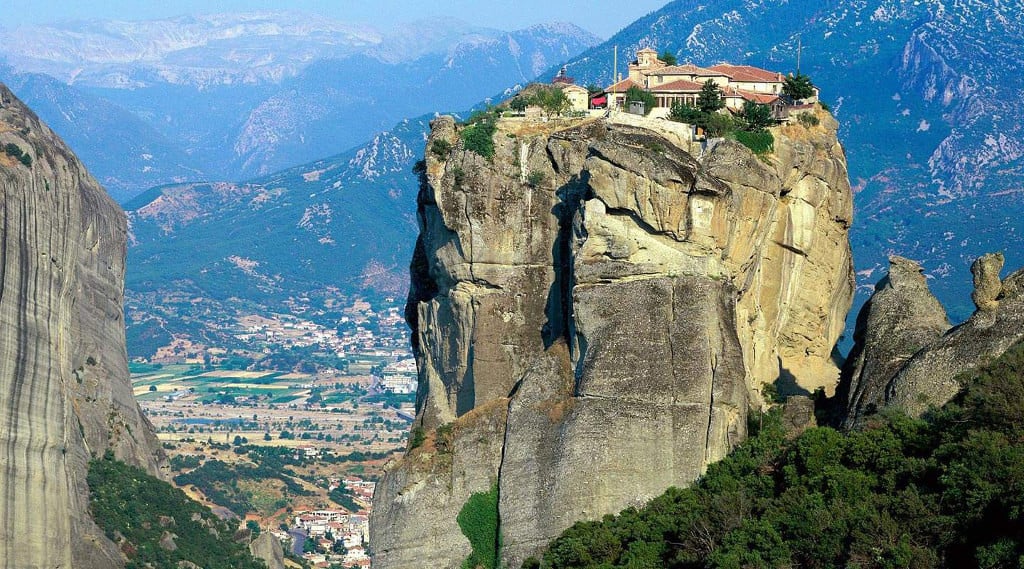
According to the official version, the first stone of one of the future monasteries was laid by a hermit known as Barnabas. This significant event occurred in 950 AD. Initially, small sketes were formed, around which groups of monks gathered, and much later, they started to grow and turned into a vast monastic complex consisting of separate buildings. This continued until the Greek territory began to be “torn apart” by numerous tribes of invaders.
Today, these places are considered a true Greek “pearl,” attracting thousands of tourists from all over the world. The amazing image of rocks floating in the sky is complemented by enormous monasteries of stone that seem to reach for the clouds. It seems that the buildings are simply carved out of the rock itself. Can you picture it? Now add to this breathtaking scene the fairy-tale sunrises and sunsets… Personally, I start to envy the inhabitants of the Thessalian heights, who witness such landscapes daily!
Construction of the Monasteries

According to historians, the construction of the temple structures took place under extremely difficult conditions. All the necessary materials were manually delivered to the top using simple rope ladders and cables. To overcome such a hard path, a monk had to learn the basics of rock climbing and not be among cowards.
Throughout the construction, the monks lived quite modestly. For example, their only source of water was cracks and niches carved directly into the rocks, where rainwater collected. They generally ate what the gods sent them. Thus, the titanic work was based almost solely on enthusiasm and faith.
Which Monasteries Are Included in the Complex?
The “floating in the air” temple complex includes several buildings. Each structure is unique and has many interesting facts in its rich history.
Agiou Nikolaou Anapafsas Monastery (Saint Nicholas)
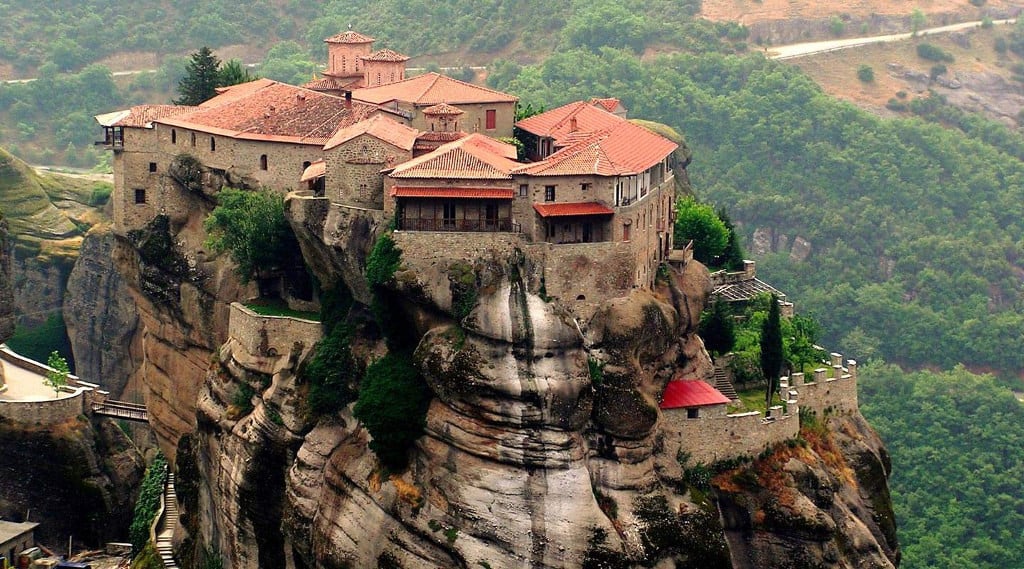
The first monastery worth mentioning is Agiou Nikolaou Anapafsas (which translates to Saint Nicholas Cathedral). The first mentions of it date back to the 1500s, which, according to some historians, is its founding time. There are grounds to believe that the initiator of the temple’s creation was the Metropolitan of Larissa Dionysius, and the galleries’ frescoes were painted by the famous Cretan artist Theophanes Batats-Strelitzas.
Rousanou Monastery
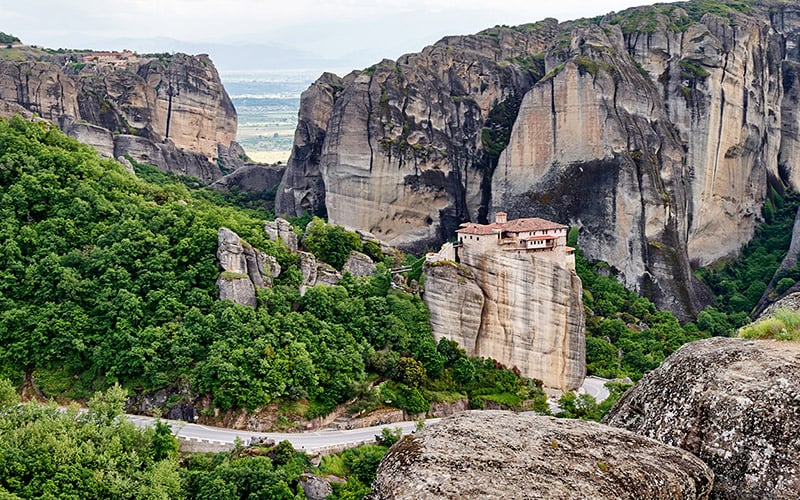
Equally interesting is the Rousanou Cathedral, founded somewhat later, around 1545. This majestic structure is attributed to brothers Ioasaph and Maximus. Its main pride is the beautiful frescoes and the stunningly beautiful wooden gilded altar. The iconostases inside are of great value and deserve your attention.
Varlaam Monastery
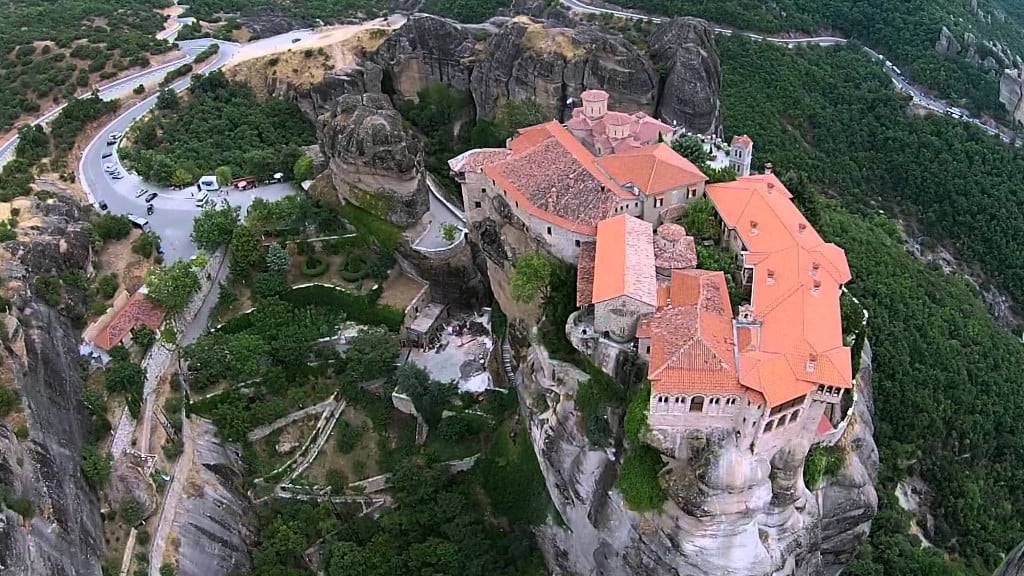
Founded in 1517 by Theophanes and Nectarius Apsaras, the magnificent frescoes adorning the main gallery are the work of the genius painter Franco Catalano and date back to 1548. Here are stored the oldest and most valuable manuscripts, shrouds embroidered with gold threads, and many other artifacts.
Agia Triada (Holy Trinity) Monastery
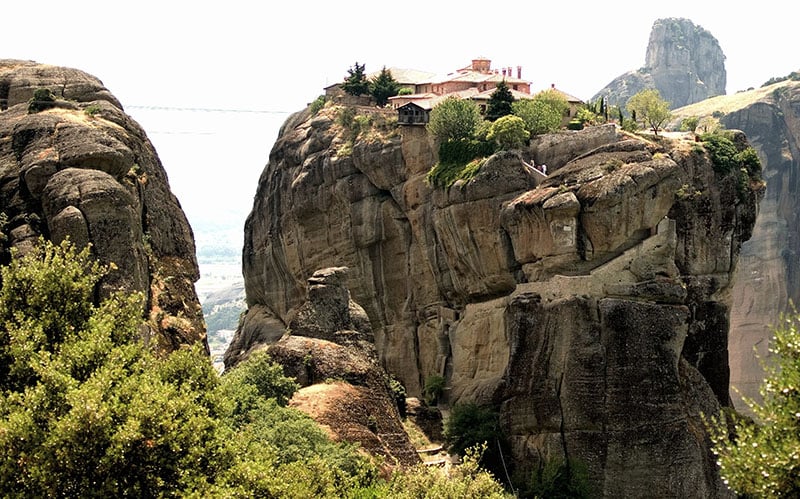
Attracts with its unusual chapel, located almost at the highest point of the mountains. To appreciate its original structure, you will have to climb an additional 140 steps carved into the rock.
Megalo Meteoro (Great Meteoron) Monastery
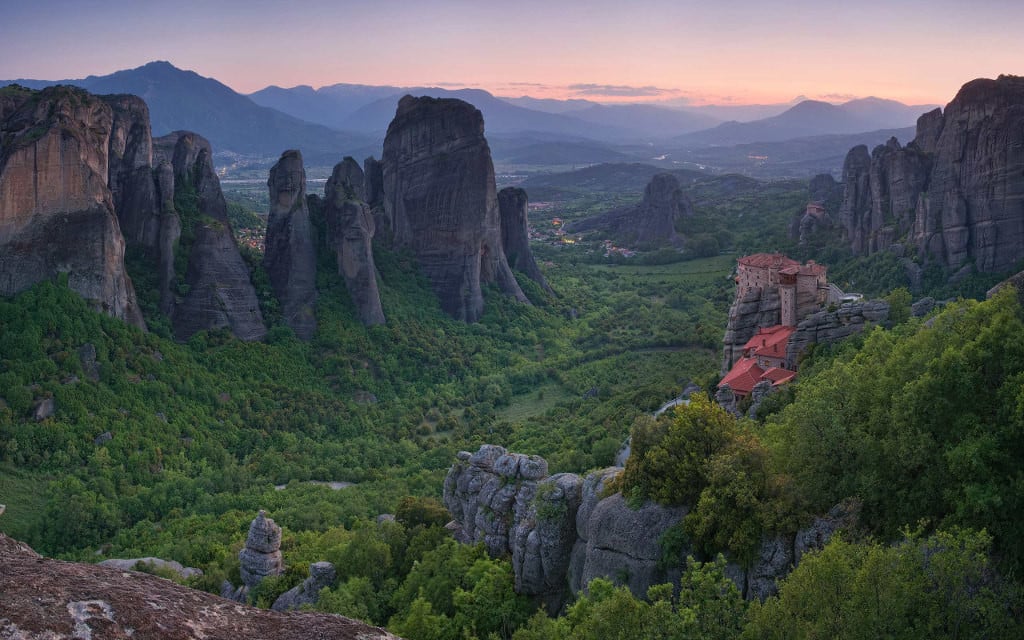
Also known as the Transfiguration of Christ, it is considered one of the earliest. Its founder is Athanasius the Meteorite, who was a prominent supporter of Orthodoxy in his time. This place houses the most beautiful frescoes by the famous Theophanes and the largest number of rare icons.
Agiou Stefanou Monastery (Saint Stephen)
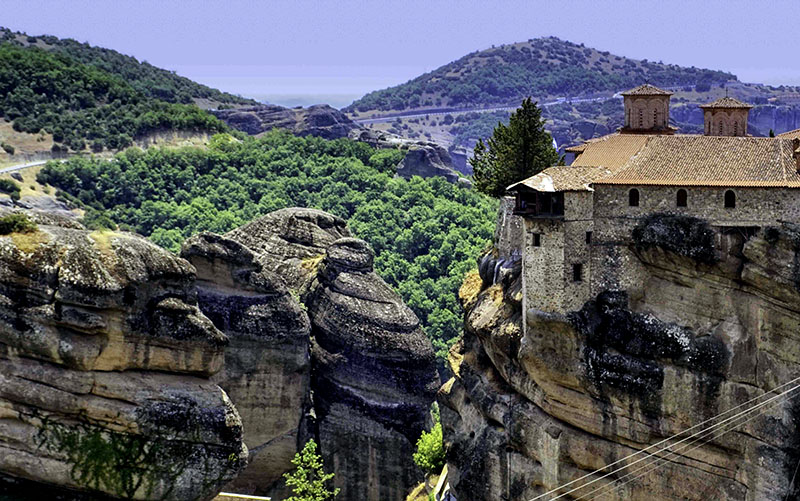
It is the only structure for nuns. Visitors can appreciate its impressive collection of relics.
How to Get There from Athens
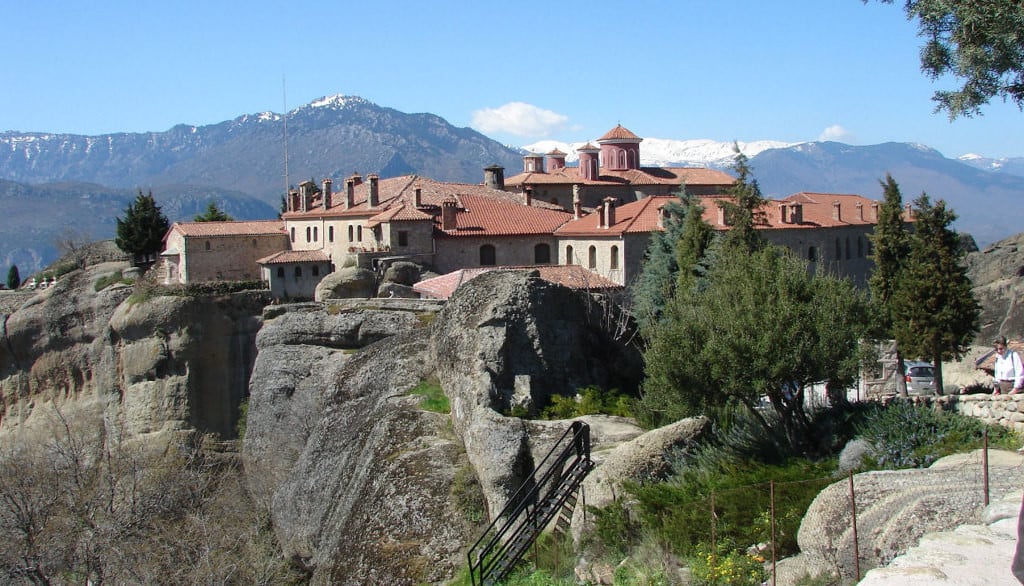
If you are in Athens, you can take a bus from Terminal B or a train from Larissis Station. To save money, buy a round-trip ticket. Useful information for those who choose the bus – it departs from the terminal every two hours from 7:30 to 15:30. You can reach Kalambaka in 4.5 hours.
For those who prefer train travel – you need train 884 to get there and train 885 on the way back. The trip will take you 5 hours. If you have a rented car, you will need to cover almost 400 km through Lamia, Domokos, Karditsa, and Trikala, with signs being quite rare along the way.
How to Get There from Thessaloniki
Want to get to Meteora from Thessaloniki? Nothing could be easier. You can do it in 3 hours by train. When you reach Kalambaka in your chosen way, head to the Plateia Dimarhiou fountain. Nearby is a stop where a bus departs to the village of Kastraki. If you are traveling on weekdays, note that departure times are 9:00 and 13:30, and on Saturdays or Sundays, at 8:20 and 13:20.
From the village, you can take a bus to the Monastery of the Transfiguration of Christ. You can also book a tour at any agency, allowing everyone to touch ancient history and see with their own eyes the legendary halls decorated with frescoes of the first inhabitants and enormous libraries. Here are stored the most valuable and ancient manuscripts, preserved by hermits from the Middle Ages to our time.
Meteora itself is a religious shrine, a modern place of pilgrimage for Greeks and many foreigners, allowing visitors to see grandiose icons of cultural and historical significance.
Greek Meteora undoubtedly deserves your attention. Embark on an amazing journey right now!

